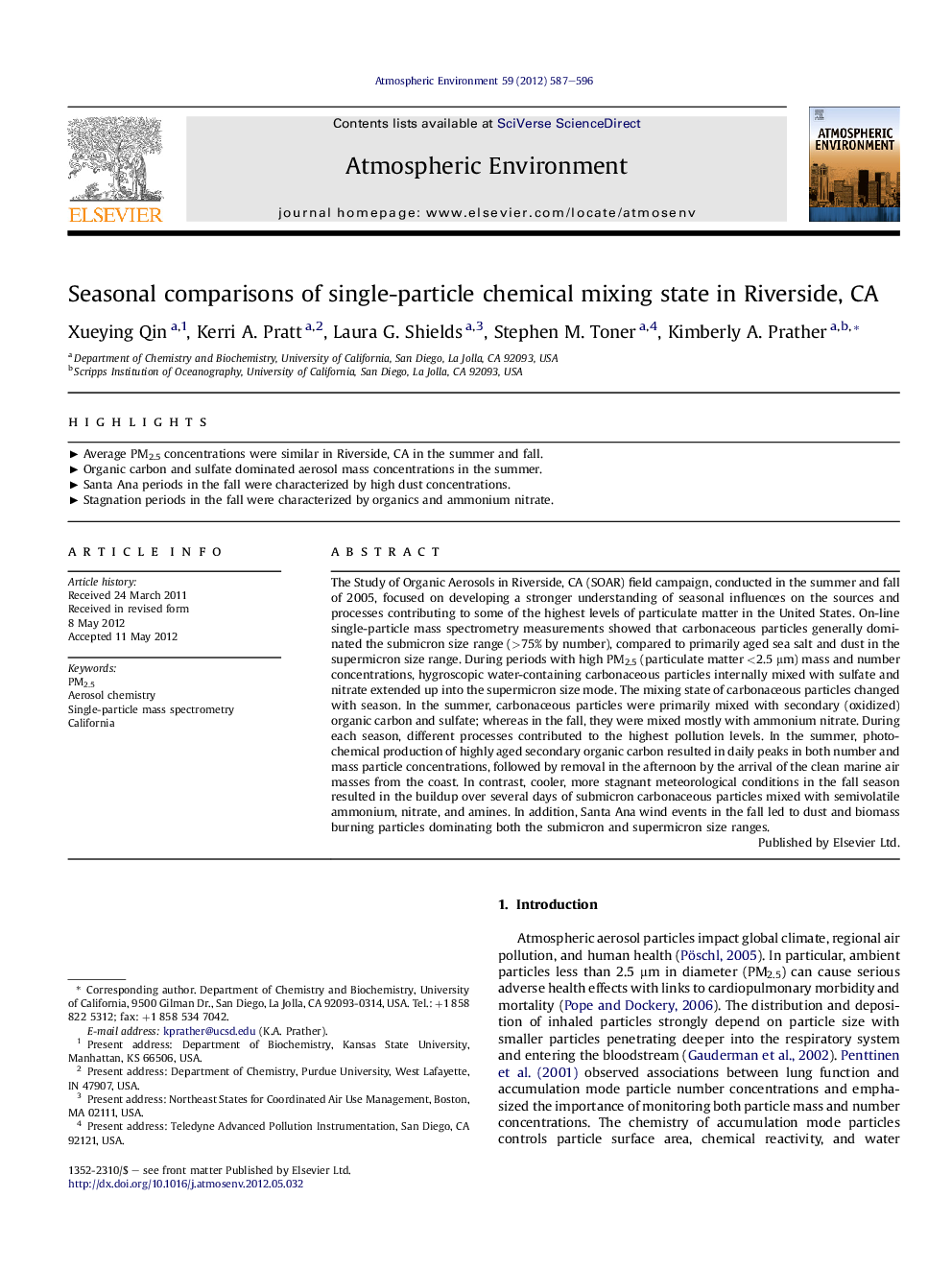| Article ID | Journal | Published Year | Pages | File Type |
|---|---|---|---|---|
| 6342452 | Atmospheric Environment | 2012 | 10 Pages |
The Study of Organic Aerosols in Riverside, CA (SOAR) field campaign, conducted in the summer and fall of 2005, focused on developing a stronger understanding of seasonal influences on the sources and processes contributing to some of the highest levels of particulate matter in the United States. On-line single-particle mass spectrometry measurements showed that carbonaceous particles generally dominated the submicron size range (>75% by number), compared to primarily aged sea salt and dust in the supermicron size range. During periods with high PM2.5 (particulate matter <2.5 μm) mass and number concentrations, hygroscopic water-containing carbonaceous particles internally mixed with sulfate and nitrate extended up into the supermicron size mode. The mixing state of carbonaceous particles changed with season. In the summer, carbonaceous particles were primarily mixed with secondary (oxidized) organic carbon and sulfate; whereas in the fall, they were mixed mostly with ammonium nitrate. During each season, different processes contributed to the highest pollution levels. In the summer, photochemical production of highly aged secondary organic carbon resulted in daily peaks in both number and mass particle concentrations, followed by removal in the afternoon by the arrival of the clean marine air masses from the coast. In contrast, cooler, more stagnant meteorological conditions in the fall season resulted in the buildup over several days of submicron carbonaceous particles mixed with semivolatile ammonium, nitrate, and amines. In addition, Santa Ana wind events in the fall led to dust and biomass burning particles dominating both the submicron and supermicron size ranges.
⺠Average PM2.5 concentrations were similar in Riverside, CA in the summer and fall. ⺠Organic carbon and sulfate dominated aerosol mass concentrations in the summer. ⺠Santa Ana periods in the fall were characterized by high dust concentrations. ⺠Stagnation periods in the fall were characterized by organics and ammonium nitrate.
